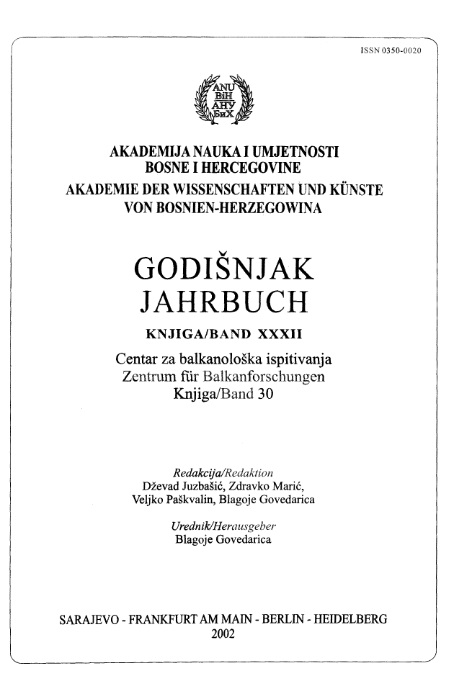Inhumirani grob žene na Kamenjači u Brezi nekropoli predrimskih Dezitijata
The Inhumed Grave of a Woman from Kamenjača in Breza, a Nekropolis of the Pre-Roman Daesitiates
Author(s): Veljko PaškvalinSubject(s): Archaeology, Cultural history, Customs / Folklore, Ethnohistory, Local History / Microhistory, Ancient World
Published by: Akademija Nauka i Umjetnosti Bosne i Hercegovine
Keywords: Kamenjača; Breza; inhumed grave of a woman; pre-Roman Daesitiates; archaeology; culture; the ritual of inhumation; dating graves; fibulae; ornaments;
Summary/Abstract: The explored archaeological material from the Daesitiates’ necropolis with incineration at Kamenjara in Breza has not been published as a whole. Its importance and significance was only presented in several shorter contributions, especially when the study and introduction of the cultural history of the Daesitiates in pre-Roman or La Tene periods were the issue. Also, the intention is to present the cultural-historical peculiarity of this necropolis by the paper on an inhumed grave of a woman (T. II, 1-4), the only one among the graves with incineration at Kamenjača. It has been tried to obtain answers to two relevant questions. How the burial of the inhumed woman should be dated or, in the same context, when the ritual of inhumation ceased among the Daesitiates, and when the rite of incineration started at their necropolis at Kamenjača. Thus, on the basis of comparative analysis of the early La Tène (T. IV, 1-3) and middle La Tène (T. Ill, 1-6 and T. IV. 4) fibulae from the grave of the woman, and in regard with the dating of the inhumed grave, it has been established that the skeletal grave of the woman cannot be dated by the older fibulae of the early La Tène scheme, but by the middle and early La Tène (T. Ill, 1-6 and T. IV, 4). According to this, the woman’s burial could have been, actually, only from the end of the 2nd century BC, when among the Celts, in their territory, an ornamentation technique appeared on the foot of fibulae and the arch as well, with grains of amber or enamel, while the older early La Tène type of fibulae or jewelry was kept within the family or tribal community.
Journal: Godišnjak Centra za balkanološka ispitivanja
- Issue Year: 2002
- Issue No: 32
- Page Range: 329-348
- Page Count: 20
- Language: Bosnian

